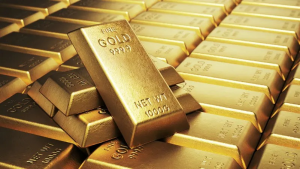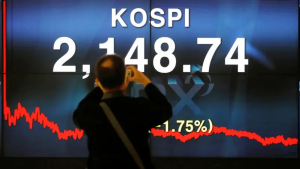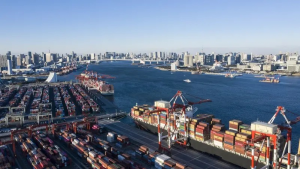The yen tumbled past the key psychological level of 150 to the dollar on Thursday for the first time since 1990, defying Japanese policymakers' repeated threats of intervention to address excessive currency market volatility.
The dollar/yen's break above the key milestone heightens pressure for Tokyo to step into the currency market again to rein in the Japanese unit's relentless decline.
Earlier in the day, Japanese Finance Minister Shunichi Suzuki vowed to take "appropriate steps" against excessive currency market volatility. "It's a big psychological level that could trigger intervention ... people have been anticipating intervention for a while," Moh Siong Sum, currency strategist at Bank of Singapore, said of the yen's 150 to the dollar threshold.
"150 and people are going to look over their shoulders for a while and see whether there's any action or not, if not, they're going to push it further, higher. That's how the market goes. The next resistance I see would be around 153 level." The Bank of Japan, for its part, ramped up efforts to defend its 0% bond yield cap earlier on Thursday with offers of emergency bond buying, in a show of resolve to maintain the ultra-low interest rate policy that is blamed for pushing down the yen.
The central bank's step underscores the dilemma Tokyo faces in trying to contain unwelcome yen falls, without resorting to interest rate hikes that could derail Japan's fragile recovery. "Recent rapid and one-sided yen declines are undesirable. We absolutely cannot tolerate excessively volatile moves driven by speculative trading," Suzuki told parliament on Thursday.
"We will continue to take appropriate steps against excess volatility, while watching currency market developments with a strong sense of urgency," he said.
The Ministry of Finance, which holds jurisdiction over currency policy, spent 2.8 trillion yen ($19 billion) in dollar-selling, yen-buying intervention last month when authorities acted in the markets to prop up the yen for the first time since 1998.
The yen tumbled below 150 against the dollar on Thursday, its weakest since August 1990, keeping investors on high alert to the possibility of another Japanese intervention in the currency market. It last traded at 149.770.
Japanese policymakers have signalled that they were watching the speed of yen moves, rather than target a specific level, in deciding whether to intervene.
BOJ Governor Haruhiko Kuroda on Wednesday ruled out the chance of raising the bank's ultra-low interest rates to moderate the yen's downtrend, even as he warned that sharp yen moves would hurt the economy.
While market worries about intervention have kept the pace of yen falls fairly slow, analysts expect the currency to remain on a downtrend as long as the BOJ remains a dovish outlier among a global wave of central banks hiking rates.
The BOJ faces renewed challenges in keeping long-term interest rates stably low with its policy dubbed yield curve control (YCC), under which it pumps money aggressively to cap the 10-year bond yield around 0%.
The central bank conducted emergency bond-buying operations on Thursday, as rising global yields pushed the 10-year Japanese government bond (JGB) yield above its implicit 0.25% cap for the second straight day.
"The BOJ likely sent a message to markets, which is having some effect," said Shinsuke Kajita, chief strategist at Resona Holdings in Tokyo. "But it's hard to keep JGB yields from rising, given very strong upward pressure from overseas."
The BOJ is widely expected to maintain its massive stimulus programme at its next two-day policy meeting ending Oct. 28.
Once welcomed for the competitive boost it gives exports, the weak yen has become a headache for policymakers as it inflates the costs of already expensive imported fuel and raw materials.











